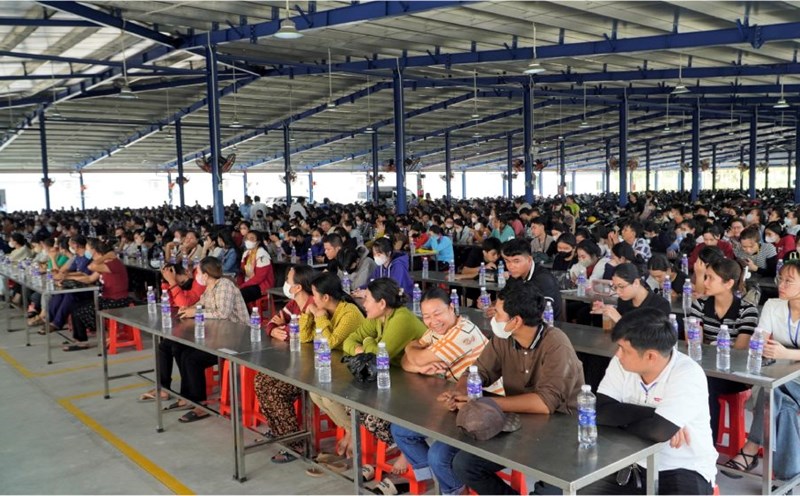Enterprises develop strongly in scale and location
The merger of the three localities of Ho Chi Minh City, Binh Duong and Ba Ria - Vung Tau has created a dynamic economic system, while at the same time requiring adjustments to policies and management methods to accompany businesses in the new period.
Records from businesses show that the investment - business environment in the new Ho Chi Minh City is becoming more smooth, effectively supporting production, recruitment, investment and digital transformation.
From the business perspective, Mr. Tran Viet Anh - Chairman of the Board of Directors, concurrently General Director of Nam Thai Son Import-Export Joint Stock Company, assessed that the organization of two-level government after the merger helps businesses more conveniently in administrative procedures, the market environment becomes smooth, no longer discriminating between localities. In particular, recruiting workers or renting land is also easier because they are located in the same administrative area.
"Two-level governments currently apply technology in management, which forces businesses to adapt, thereby promoting the digital transformation process. When coming to work, both people and businesses only need to go to one gate, the Public Administration Service Center, with a quick, compact handling process, creating positive efficiency" - Mr. Viet Anh shared.
The business community expects that with flexible coordination and strategic vision, Ho Chi Minh City will not only maintain its leading position but also rise to become a model economic development model linking the model region, paving the way for stronger changes in the future.
Towards a multi-pillar economic supercity
According to Mr. Nguyen Ngoc Hoa - Chairman of the Ho Chi Minh City Business Association, after the merger, Ho Chi Minh City has opened up more development space for businesses. Not only growing in quantity, the business community here also diversifies production, business activities, and invests in many new fields.
"We have recorded many enterprises headquartered in Ho Chi Minh City but having factories and branches in the old Binh Duong, Ba Ria - Vung Tau - localities that have now become part of the expanded Ho Chi Minh City. This is an inevitable trend in the context of businesses needing to expand their scale, take advantage of infrastructure, logistics, and human resources - Mr. Hoa commented.
However, Mr. Hoa also emphasized the importance of issuing a unified policy for all businesses in the new Ho Chi Minh City soon, especially support programs such as interest rate incentives.
"We have received many loan applications from businesses from Binh Duong and the old Ba Ria - Vung Tau. The city's specific guidance documents will help businesses feel secure in implementing investment and production plans," he said.
Mr. Hoa also proposed that the City People's Council soon issue a resolution to expand the scope of beneficiaries of support programs, especially businesses participating in green transformation but have not yet decided to borrow interest rate support.
From the perspective of investment promotion, experts say that the merger not only has geographical and administrative significance, but also creates conditions to form a closely linked economic ecosystem between regions. This connection helps businesses better take advantage of the advantages of each region in a unified whole.
Ms. Cao Thi Phi Van - Deputy Director of the Ho Chi Minh City Investment and Trade Promotion Center - assessed that after the merger, Ho Chi Minh City will become a special urban area with a multi-pillar economy, connecting the potential of three large localities.
According to Ms. Van, Ho Chi Minh City is now not only a financial - commercial center, but also integrates the industrial power of the old Binh Duong, the logistics ecosystem - seaports from the old Ba Ria - Vung Tau, along with the potential for agricultural development and marine tourism.
This combination creates conditions to form a closed closed intra-regional value chain, helping to reduce transaction costs, improve competitiveness and gradually turn Ho Chi Minh City into a leading supercity in the development of the Southern economic region and the whole country - Ms. Van affirmed.










